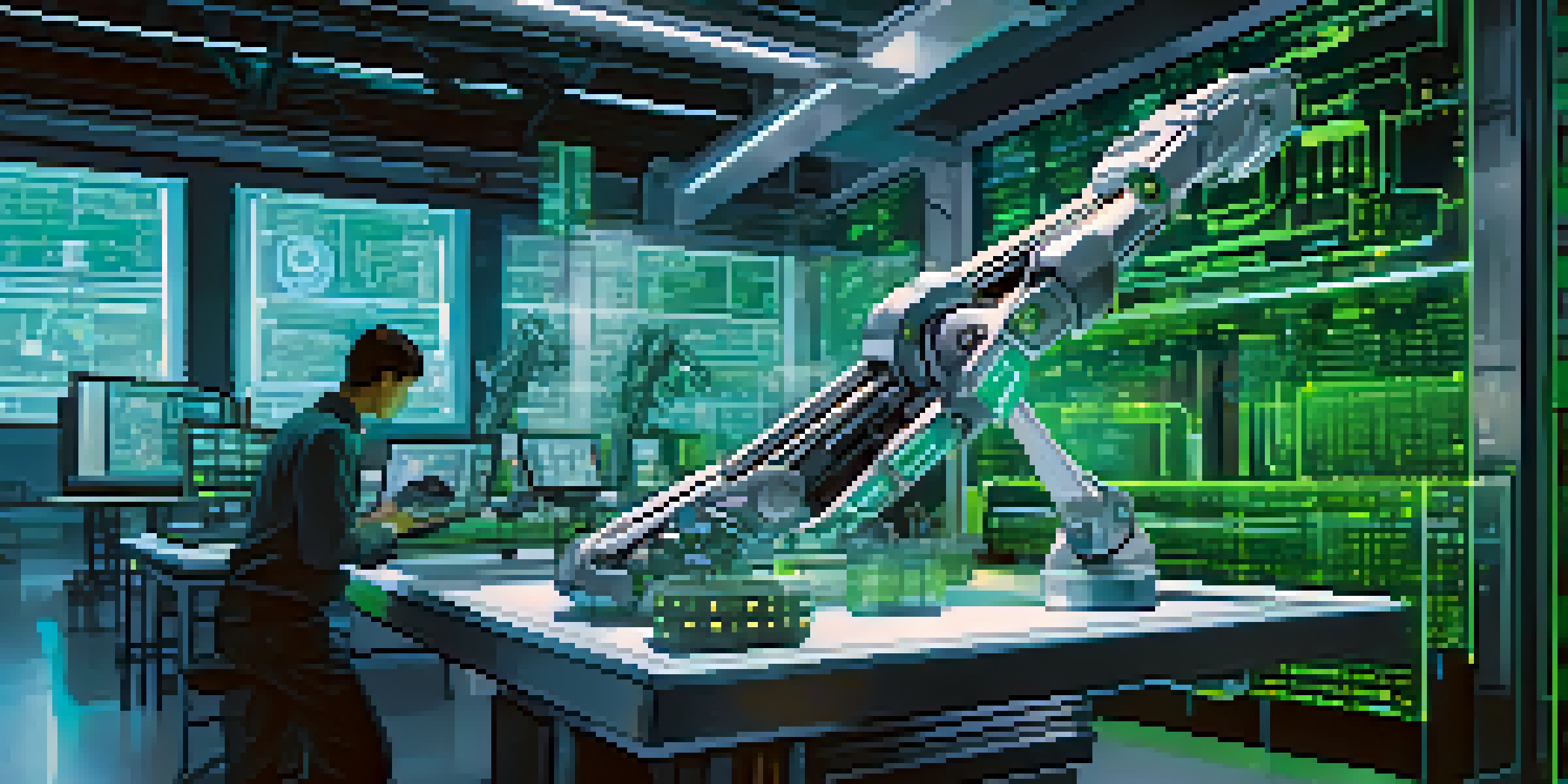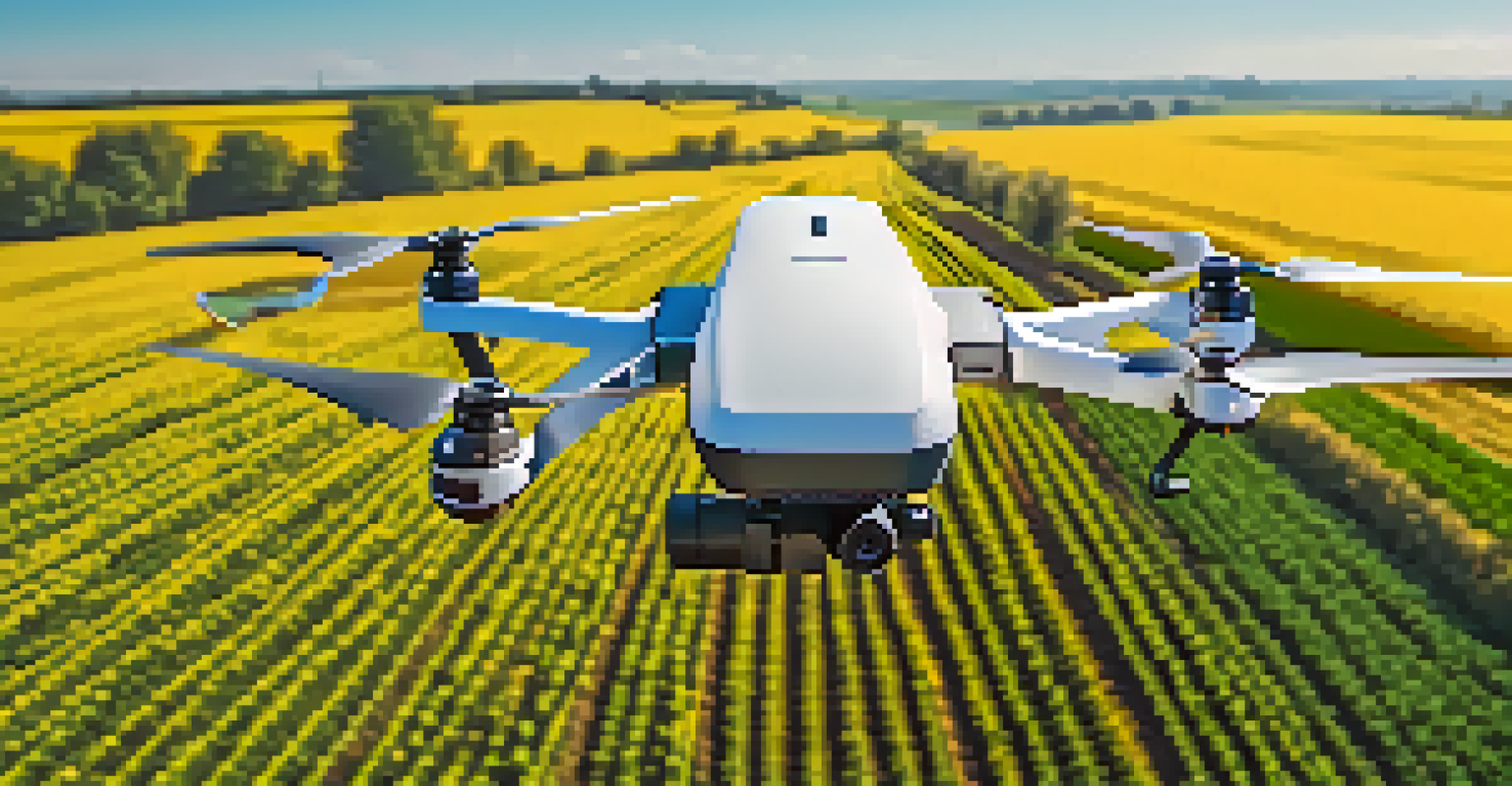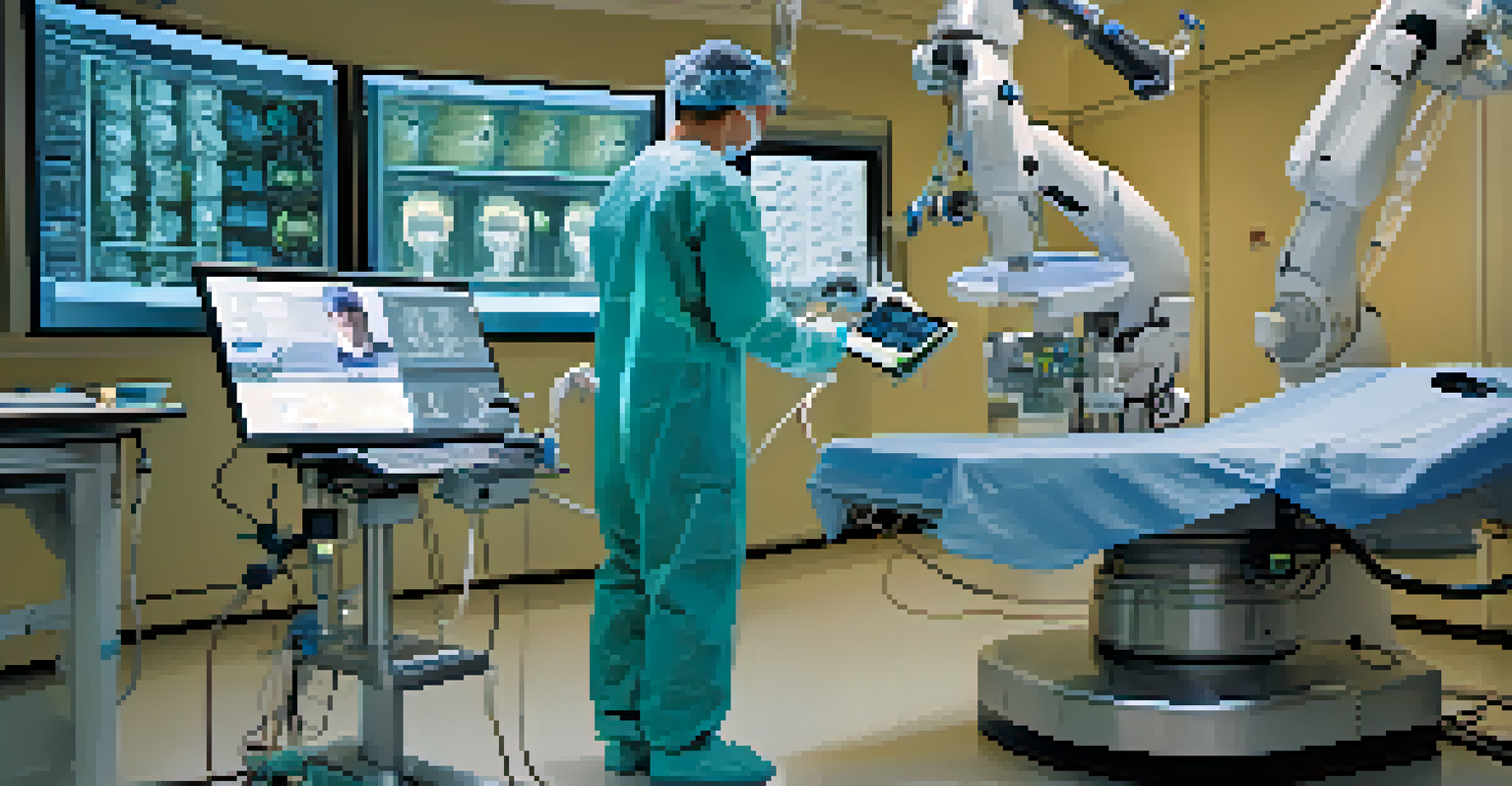Cyber-Physical Systems in Robotics: Enhancing Autonomous Control

Understanding Cyber-Physical Systems in Robotics
Cyber-Physical Systems (CPS) merge computational elements with physical processes, creating a dynamic interaction between the two. In robotics, this means that robots can not only operate in the physical world but also process data and make decisions in real time. For example, a self-driving car uses CPS to navigate its environment by integrating sensors, algorithms, and actuators seamlessly.
The future is already here – it's just not very evenly distributed.
These systems enhance the capabilities of robots, allowing them to adapt and respond to changing conditions around them. By using sensors to collect data, robots can understand their surroundings better and make informed decisions. This adaptability is crucial, especially in environments that are unpredictable or hazardous.
Overall, CPS represents a significant leap in robotic technology, moving from simple automation to intelligent, autonomous systems. As we delve deeper into how these systems work, we’ll see their impact on various sectors, from manufacturing to healthcare.
The Role of Sensors in Cyber-Physical Systems
Sensors are the eyes and ears of cyber-physical systems, gathering crucial data from the environment. In robotics, they help machines perceive their surroundings, enabling them to react accordingly. For instance, a robotic vacuum cleaner uses sensors to detect obstacles and map out the most efficient cleaning path.

These sensors can range from simple infrared sensors to advanced LIDAR systems, each serving specific functions. The data collected allows robots to create a real-time representation of their environment, which is essential for tasks such as navigation and object recognition. Such capabilities lead to improved accuracy and efficiency in robotic operations.
CPS Enhances Robot Autonomy
Cyber-Physical Systems enable robots to adapt and make real-time decisions based on data from their environment.
Moreover, the integration of sensors with CPS enhances the autonomy of robots, allowing them to operate with minimal human intervention. This not only increases productivity but also opens up new possibilities in fields like agriculture, where autonomous drones can monitor crops with precision.
Data Processing and Decision-Making in Robotics
Once data is collected from sensors, the next step is processing this information to make informed decisions. This is where the computational aspect of cyber-physical systems comes into play. Advanced algorithms analyze the data, allowing robots to interpret complex scenarios and decide how to act.
Robots will play an important role in addressing the challenges of the future, from healthcare to manufacturing.
For example, an industrial robot might analyze data from its environment to adjust its operations, improving both safety and efficiency. By using machine learning techniques, these robots can learn from past experiences, adapting their responses over time. This capability is especially valuable in dynamic settings where conditions can change rapidly.
Thus, the synergy between data processing and decision-making is vital in enhancing the autonomy of robots. It enables them to function effectively in various applications, from autonomous vehicles navigating city streets to drones delivering packages.
Real-Time Feedback and Control in Robotics
Real-time feedback is a cornerstone of effective autonomous control in robotics. Cyber-Physical Systems facilitate this by constantly monitoring the robot's performance and its environment. This continuous feedback loop allows robots to make instant adjustments, ensuring optimal operation.
For instance, in surgical robotics, real-time feedback can help surgeons perform delicate procedures with greater precision. The robotic system can provide instant data about the patient's condition, allowing for immediate responses to any changes. This capability is critical in high-stakes environments where every second counts.
Sensors Drive Robotic Perception
Sensors act as the vital components in CPS, allowing robots to perceive and interact effectively with their surroundings.
In essence, real-time feedback enhances the reliability and safety of robotic systems. By constantly adjusting to new information, robots can navigate complexities and uncertainties in their tasks, making them invaluable in various industries.
The Impact of Cyber-Physical Systems on Robotics
The integration of cyber-physical systems in robotics has profound implications across multiple sectors. From manufacturing to healthcare, CPS enhances operational efficiency, reduces costs, and improves safety. Robots equipped with these systems can perform tasks that are dangerous or impossible for humans.
In manufacturing, for example, CPS can streamline production lines by enabling robots to communicate and collaborate more effectively. This leads to smarter factories where technology and human workers can coexist harmoniously, boosting productivity while maintaining safety standards. Similarly, in healthcare, robotic systems can assist in surgeries, providing precision that significantly reduces recovery times.
Overall, the impact of CPS on robotics is not just about technological advancement; it’s about transforming industries and improving quality of life. As these systems continue to evolve, their potential to reshape our world only grows.
Challenges in Implementing Cyber-Physical Systems
Despite their potential, implementing cyber-physical systems in robotics comes with challenges. One major issue is ensuring the reliability and security of these systems. As robots become more interconnected, they also become more vulnerable to cyberattacks, which could compromise their functionality and safety.
Moreover, the complexity of CPS can make development and maintenance a daunting task. Engineers must navigate a landscape of hardware and software integration, requiring specialized knowledge and skills. This complexity can lead to increased costs and longer development times, which can be a barrier for smaller companies.
AI and IoT Shape Robotics Future
The integration of AI and the Internet of Things is set to revolutionize robotics, enhancing their decision-making and operational capabilities.
Addressing these challenges is crucial for the widespread adoption of CPS in robotics. Continued research and development, alongside collaboration between industries, will be key in overcoming these hurdles and unlocking the full potential of these systems.
Future Trends in Cyber-Physical Systems and Robotics
Looking ahead, the future of cyber-physical systems in robotics is bright and full of possibilities. One emerging trend is the use of artificial intelligence (AI) to enhance decision-making capabilities. As AI becomes more advanced, we can expect robots to exhibit even greater autonomy and adaptability in various tasks.
Additionally, the Internet of Things (IoT) is set to play a significant role in the evolution of CPS. By connecting robots with other devices and systems, we can create a more integrated and responsive environment. This interconnectedness will enable smarter operations, allowing for real-time data sharing and collaboration between machines.

Ultimately, the future of robotics within the realm of cyber-physical systems promises to revolutionize how we live and work. As technology continues to advance, we can anticipate a world where robots enhance our daily lives, making tasks easier and fostering innovation across sectors.